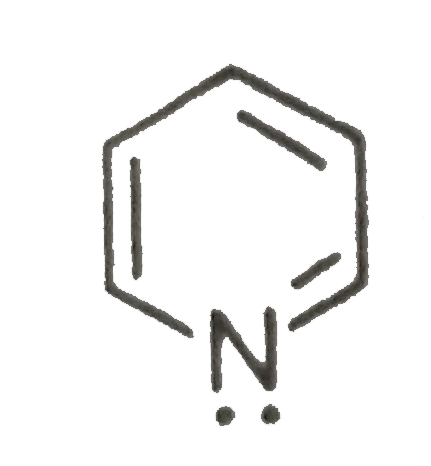Complete Solutions to MCQ s of chapter GENERAL ORGANIC CHEMISTRY of Class 12 book with complete answers and questions
| Class 12 | CHEMISTRY |
| Chapter | GENERAL ORGANIC CHEMISTRY |
| BANSAL | MCQ s |
| Number Of Questions | 58 |
| Academic Year | 2023-24 |
Find out the correct statement(s) about given compound

View SolutionIncorrect order of Heat of hydrogenation per `pi`-bond is
View SolutionWhich statement is correct for electromeric effect
View SolutionHyperconjugation occur due to overlaping of
View SolutionWhich of the following properties cannot be explained on the basis hyperconjugation.
View SolutionCorrect order of stability-
View SolutionWhich of the following is most stable carbocation.
View SolutionDeactivating effect of `-C Cl_(3)` can be explained on the basis of
View SolutionWhich of the following alkenes will react fastest with `H_(2)` under catalytic hydrogenation conditions
View SolutionWhich of the following has maximum hydrogenation energy.
View SolutionSelect the nucleophile
View SolutionAn electrophile among the following is-
View SolutionA nucleophile is:
View SolutionWhich of the following species is an electrophile?
View SolutionWhich is not considered as electrophile
View SolutionHomolytic fission of organic compound yields
View SolutionThe number of electrons present in the valence shell of carbon of `CH_(3)overset(+)(C)H_(2)` ion bearing `+ve` charge:
View SolutionInductive effect refers to-
View Solutionmost acidic hydrogen is present in
View SolutionThe least acidic among the following acids is-
View SolutionAmong the following which one is most basic-
View SolutionWhich one is the characteristic feature of a free radical:
View SolutionBenzoylperoxide, when heated to about `80^(@)`C gives a-
View SolutionWhich one is a `1^(@)` carbocation of the following
View Solution`overset(Theta)(C)H_(3)` is less stable than
View SolutionWhich of the following alkyl groups has the maximum `+I` effect?
View SolutionDecreasing order of -I effect of the triad `[-NO_(2),overset(o+)(N)H_(3),-CN]` is
View SolutionMaximum -I effect is exerted by the group-
View SolutionChoose the strong base from each of the following pair
(1). `.^(-)OC_(2)H_(5),.^(-)OH`
(2). `HC--=C^(-),CH_(3)^(-)`
(3). `Br^(-),I^(-)`
(4). `CH_(3)^(-),NH_(2)^(-)`
View SolutionBasic nature of `H_(3)O^(+),H_(2)O` and `OH^(-)` is in order
View SolutionWhich is most stable carbocation
View SolutionAmong the following compound, the weakest acid is-
View SolutionMost stable carbanion is :-
View SolutionWhich of the following compounds is most acidic ?
View SolutionWhich is the decreasing order of stability
(a). `CH_(3)-overset(+)(C)H-CH_(3)`
(b). `CH_(3)-overset(+)(C)H-O-CH_(3)`
(c). `CH_(3)_overset(+)(C)H-CO-CH_(3)`
View SolutionWhich molecule does not show resonance
View SolutionPolarization of electrons in acrolein may be written as:
View SolutionIn pyridine,
 Number of conjugated electrons are
Number of conjugated electrons are
View SolutionIn which compound delocalization is not possible-
View SolutionConsider the following compound:
`underset(1)(C)H_(2)=underset(2)(C)H-underset(3)(C)H=underset(4)(C)H_(2)`
carbon-carbon bond length between `C_(2)` and `C_(3)` will be-
View SolutionWhich compound has higher resonance energy in the following pairs.

(C). `underset((I))(CH_(2)=CH-F)" "underset((II))(CH_(2)=CH-Br)`
View SolutionWhich is less stable canonical structure in the following pairs.
`underset((I))(overset(o+)(C)H_(2)-O-CH_(3))" "underset((II))(CH_(2)=overset(o+)(O)-CH_(3))`
View SolutionWhich marked atom's lone pair participate in resonance phenomenon

View SolutionWhich molecules is not showing resonance.
View SolutionWhich molecules I showing `pi`-electrons alternate to `pi`-electron conjugation
View SolutionCorrect order for resonance energy in the following molecules.

View Solution
In the following canonical structures which is most stable structure.
View Solution
In the following canonical structures which is least stable structure
View Solution
Which is incorrect canonical structure
View SolutionIn which molecules non-conjugation is present
View SolutionIn which molecules resonance phenomenon operates-
View SolutionWhich of the following carboxylic acids is most acidic in character-
View SolutionWhich one of the following is most acidic
View SolutionConsider the following carbocation-
(a). `CH_(3)-overset(o+)(C)H_(2)`
(b). `CH_(2)=overset(o+)(C)H`
(c). `CH_(2)=CH-overset(o+)(C)H_(2)`
(d). `C_(6)H_(5)-Coverset(o+)(H)_(2)`
View SolutionIncreasing order of acidic strength among `p-`methoxyphenol `(i)p-`methylphenol `(II)` and `p-`nitrophenol `(III)` is
View SolutionThe groups which when present in para position tend to decrease the acidity of phenol are-
View SolutionWhich free radical is the most stable-
View SolutionWhich carbocation is the most stable-
View Solution
MCQ s questions and complete solutions for chapter GENERAL ORGANIC CHEMISTRY of BANSAL CHEMISTRY (HINGLISH) of Class 12